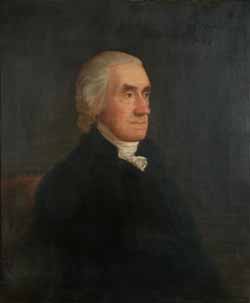A Dig into the Lives of Pompey and Isaac Hower
This project is a collaboration by Meghan Howey, Alyssa Moreau, and Diane Fiske of the University of New Hampshire’s Great Bay Archaeological Survey; Prof. Kabria Baumgartner of the Northeastern University history department; and their students.
That team is digging into the property and the records of a man named Pompey who lived in Lynn in the late 1700s. According to Alonzo Lewis’s 1829 History of Lynn, Pompey hosted the African-born people of the region for a one-day celebration each year. Baumgartner ties this tradition to the “Negro Election” tradition across New England in that period.
Research into real estate and town records provides some facts that both strengthen that tradition by confirming Pompey’s status as a free black property owner and complicate it with questions of dates:
For instance, research confirmed Pompey’s 1745 marriage to a woman named Phyllis or Phebe, and that he was enslaved by a man named Daniel Mansfield II.And then of course there’s the question of Isaac Hower. What was his story, and how did he gain enough money to be able to lend it out?
Historians believe Pompey was manumitted, or freed, by the 1750s, but apparently not — as legend holds — in Mansfield’s 1757 will.
“It’s not in the will, and we haven’t found any manumission papers,” Baumgartner says. But she notes that manumission papers are rare to find.
Upon securing his freedom, Pompey borrowed money from another Black man named Isaac Hower to purchase two acres along the Saugus River in 1762. The deed was not recorded until 1787, however, at which time Pompey signed the property over to Hower’s widow, Flora.
But many questions remain unanswered. For instance, if not freed in Mansfield’s will, did Pompey free himself?
The vital records of Salem offer some hints. On 23 Jan 1754, Isaac, enslaved by Samuel Gardner, married Jane, enslaved by Richard Derby. According to the first volume of The Pickering Genealogy, in 1757 Isaac owned the covenant and joined Salem’s First Meeting; this book says he had formerly been called Cato, but the marriage record indicates he was already known as Isaac before that religious experience.
An abstract of Samuel Gardner’s will, dated 1766 and probated in 1769, stated:
As my negro slave named Isaac has generally served me with great diligence and integrity, I give to the same Isaac £10 lawful money with his apparel, and his freedom. If he is unable to support himself, my sons George, Weld, and Henry, to support him.The Northeastern article thus says Pompey borrowed money from Hower to buy property before Hower was freed, which calls out for more research. Perhaps the purchase and mortgage were separate acts.
The vital records of Salem also record that “Isaac Hower, formerly servant to the late Samuel Gardner, Esq.,” married Mary Banister of Boston in March 1774. Later, it appears, he married a woman named Flora.
The 6 Nov 1787 Salem Mercury reported this death:
Isaac Howard (an African) aged 60——formerly a domestick of the late Samuel Gardner, Esq.---A “good and faithful servant.”Those lines are an adaptation of a couplet in Alexander Pope’s Essay on Man, with the word “condition” swapped out for “complexion.” Such a notice indicated that Hower had stature in Salem.
“Honour and shame from no complexion rise;
Act well your part, there all the honour lies.”
When Daniel Smith advertised to settle the estate the following January, he used the spelling “Hower,” as did the man’s son, so that was the family’s preference. In December 1788, Flora Hower married Reuben Pernam. The vital records don’t help after that.




